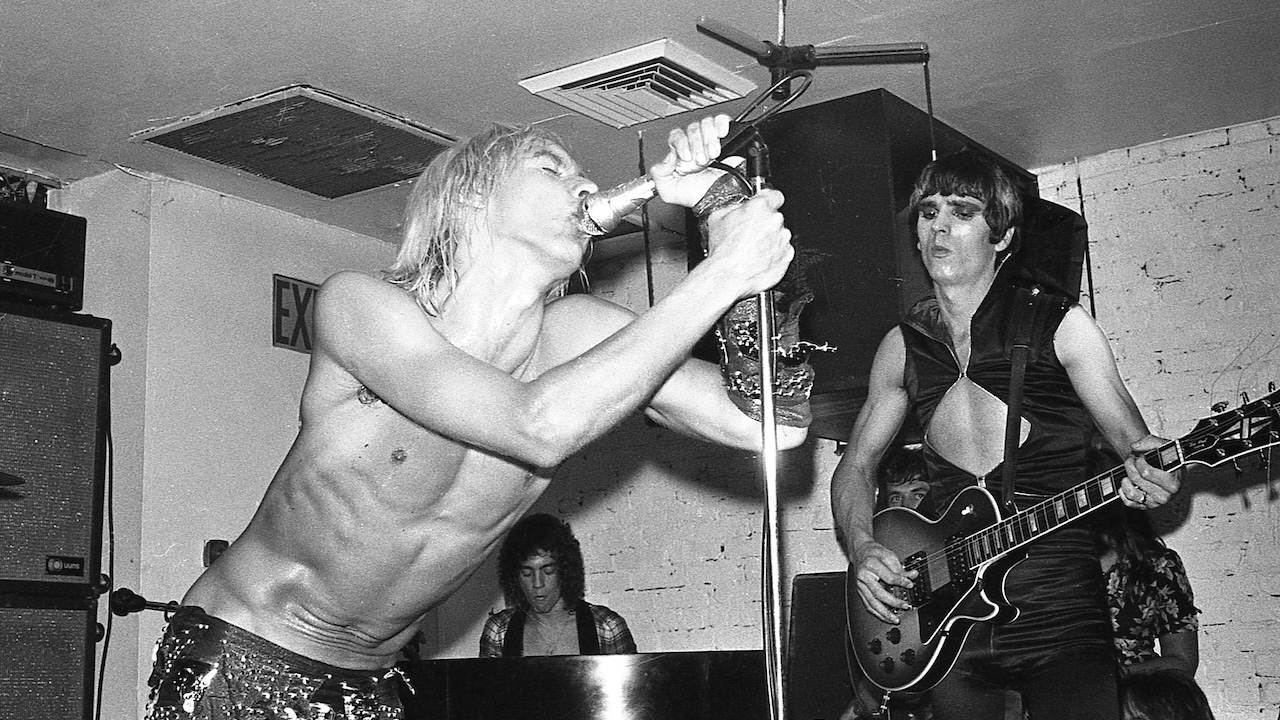“Ron played bass like John Entwistle – he was definitely into that kind of rhythmic gallop”: When Ron Asheton switched from guitar to bass, Iggy and the Stooges recorded their most influential record

If the feel-good grooves of Detroit's Motown Records in the swinging '60s had the world dancing in the street, the raw power of the Motor City's proto-punk posse Iggy and the Stooges soon sent it running for cover.
Formed in 1967 by singer Iggy Pop, guitarist Ron Asheton, drummer Scott Asheton, and bassist Dave Alexander, the powerhouse band blended the blues with heavy psychedelic rock, serving it with over-the-top stage performances that are the stuff of legend.
By most accounts, the Stooges’ volatile nature onstage was mirrored offstage; after its self-titled debut in 1969 on Elektra Records and its Fun House follow-up in 1970, the band began to splinter. Following the ejection of bassist Alexander, Elektra pulled the plug, putting the band's future in doubt.
It took a chance meeting between Pop and David Bowie in 1971 to put the band back on its feet. Viewing Iggy as a sort of Stateside Ziggy Stardust, Bowie's management company brought Pop and guitarist James Williamson to the U.K., securing a deal with Columbia Records.
Though the Asheton brothers were originally kept out of the loop, it didn't take long for Iggy and Williamson to realize that the Asheton element would be crucial in this critical reformation of the band.
With Ron Asheton switching from guitar to bass, the re-named Iggy and the Stooges soon began recording what would be their most influential record, 1973's Raw Power.
From the opening stanzas of the album's searing opener, Search and Destroy, to the closing bars of bombast, the band created what has since been regarded as a blueprint for punk rock: blistering riffs, bile-laden lyrics, and balls-out intensity.
All the latest guitar news, interviews, lessons, reviews, deals and more, direct to your inbox!
But it wasn't always so; the album was largely overlooked, and before the band could hit its stride touring behind Raw Power, it once again dissolved.
Back in 2010, with the induction of Iggy and the Stooges into the Rock & Roll Hall of Fame, and a newly re-mastered Legacy Edition of Raw Power, it seemed the world was finally ready to acknowledge one of the best ever punk rock bands.

Photographer Robert Matheu was just a kid when he first saw the Stooges play in his native Detroit, but in the years since he became something of an expert, befriending brothers Ron and Scott Asheton following the Stooges breakup in 1974. At the band's Hall of Fame induction, Matheu stood stage-side in the official capacity as the band's photographer and “Stoogeologist.”
“Ron's first gigs-in his high school band – the Chosen Few – were on bass guitar,” Matheu told Bass Player. “And I know for a fact that he was very proud of his bass playing. I suppose I'd compare Ron's playing style to that of John Entwistle or John Paul Jones – he was definitely into that kind of rhythmic gallop.
“In my book, The Stooges: The Authorized and Illustrated Story, my friend Ivan Suvanjieff writes that Raw Power was originally overlooked because you just couldn't hear Ronnie in the mix.
“He plays some great stuff on it, but I think it was a matter of the original mastering engineers not knowing what to make of the album; it was probably the loudest damn record they ever heard!
On Raw Power – perhaps even more so on the 2003 remaster – Ron Asheton's bass finesse belies the fact that he's regarded mostly as a guitarist, and Search and Destroy is truly a shining moment.
From the get-go, Asheton gooses key notes with hammer-ons and slides, and attacks riffs with a kind of measured abandon, steaming full-bore, yet never risking derailing. There might not be many flashy fills or dazzling technical displays in the line, but make no mistake – there are some tricky twists.
First up is to try to cop Asheton's near-constant hammer-ons, especially as they appear in the main riff. Make too much of each hammer-on, and the groove disappears, yet breeze by them and the line suddenly looses it mojo.

At the first chorus, Ashton's rock-steady rhythm and root-5 action is peppered with some righteous runs. After returning to another verse and chorus, he rips into the bridge with a thunderous slide.
After powering through James Williamson's guitar solo, Asheton begins to open up the verse line with propulsive rhythmic variations, and follows up with a more driving take on his chorus part; note that what was once syncopated is now a driving eight-note line. Another big slide launches into the outro. Dig that chromatic variation at 03:08, ending with a final flourish at 03:20.
“For Raw Power, I'm pretty sure Ron played a Fender Precision,” says Matheu. “But live, all the bass photos I have of Ronnie are with his Guild. And I'm pretty sure he used Hiwatt amps on stage.” Another rare Raw Power-era shot shows Asheton playing a Gibson SB 400 through a stack of Sunn amps.

![Search and Destroy [2023 Remaster] (Iggy Mix) - YouTube](https://img.youtube.com/vi/TUkUc2O6EAk/maxresdefault.jpg)
